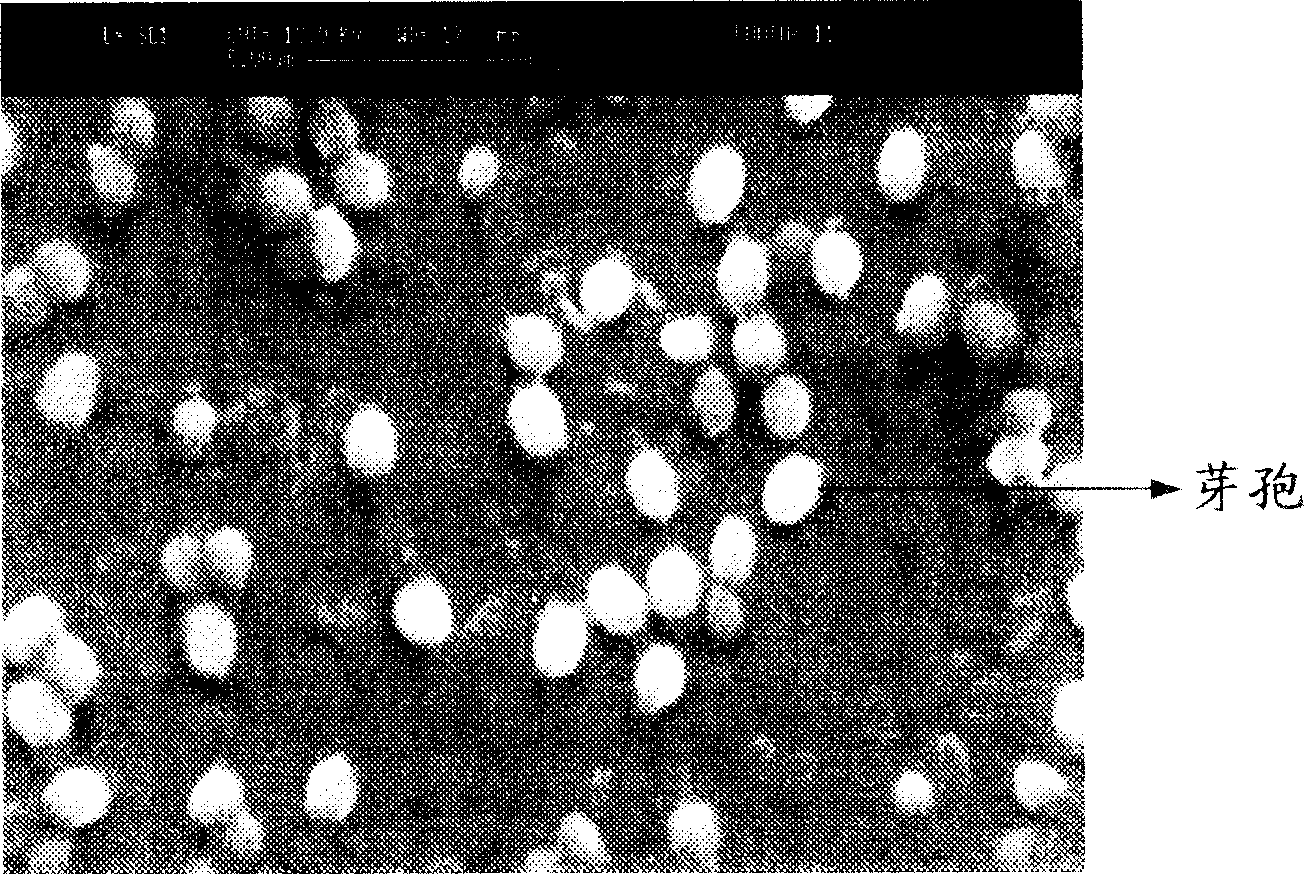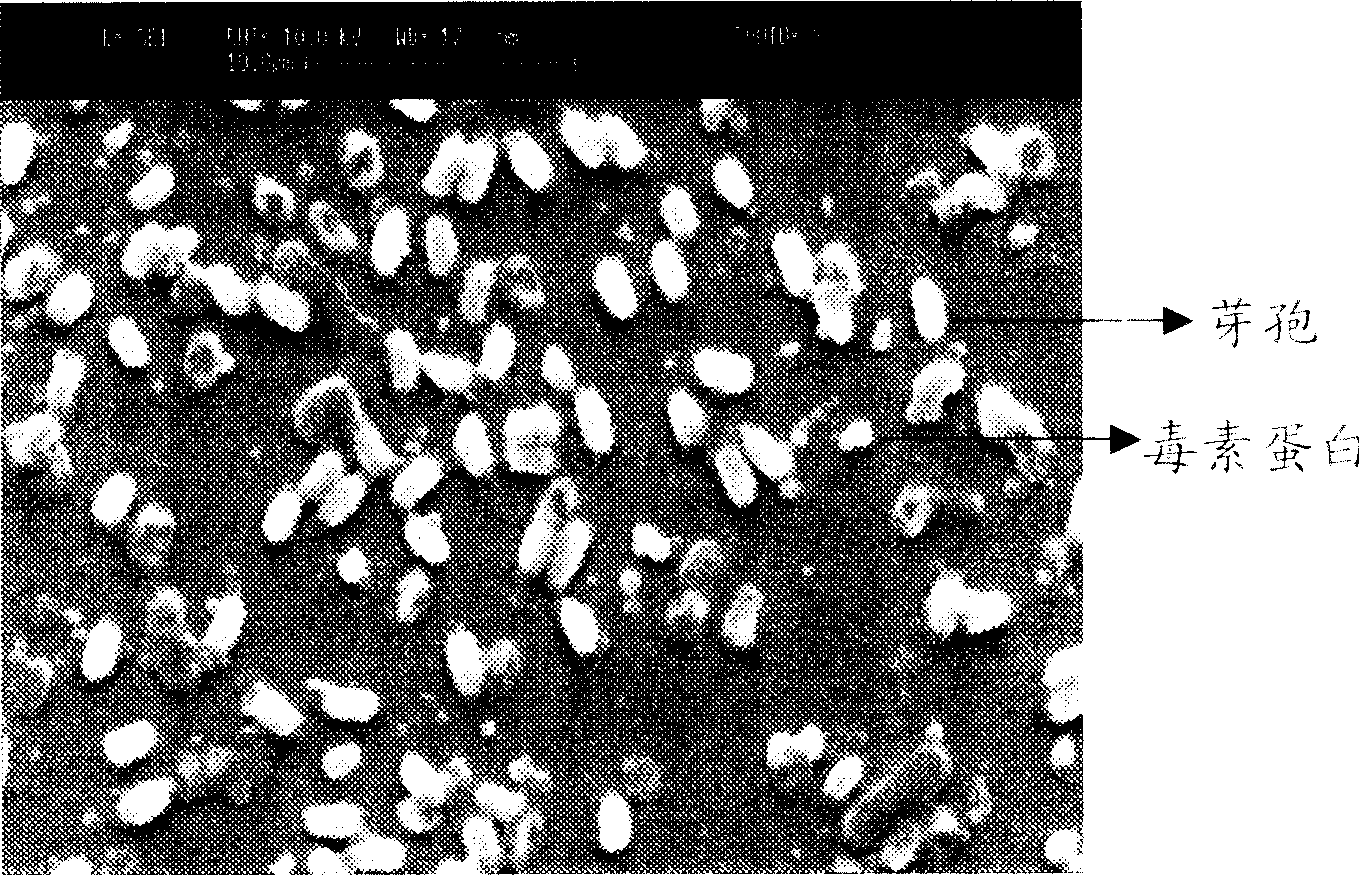Anopheline of microbe prepared from starch wastewater, and preparation method
A technology for starch wastewater and microorganisms, applied in the fields of botanical equipment and methods, biocides, animal repellants, etc., to achieve the effect of breaking through limitations, reducing wastewater treatment costs, and expanding resource utilization approaches
- Summary
- Abstract
- Description
- Claims
- Application Information
AI Technical Summary
Problems solved by technology
Method used
Image
Examples
Embodiment 1
[0032] Embodiment 1 produces Bs mosquito killer
[0033] (1) Starch wastewater sample
[0034] Take starch wastewater from a starch factory in Beijing. The factory uses corn as raw material to produce starch. The processing process is: corn→sieving→soaking→crushing→germ separation→grinding→sieving→precipitation separation→starch washing→dehydration→ Dry → starch. The main sources of wastewater are soaking water and yellow slurry water. After analysis, the carbohydrate content in the starch wastewater was 6.8g / L, the crude protein content was 19.0g / L, the solid content was 8.61%, and the pH=4.80.
[0035] (2) Conditioning of wastewater medium
[0036] To adjust the solid content of starch wastewater to 5.0%, add 0.75g / L dipotassium hydrogen phosphate, 0.30g / L magnesium sulfate and 2.5g / L foam enemy. Adjust the pH to 9.5 with NaOH, sterilize in the seed tank and fermenter at 15 lb pressure and 121 °C for 60 minutes, cool to 35 °C for later use, and the pH after sterilization...
Embodiment 2
[0050] Embodiment 2 produces Bs mosquito killer
[0051] (1) Starch wastewater sample
[0052] The starch wastewater sample is the same as in Example 1.
[0053] (2) Conditioning of wastewater medium
[0054] To adjust the solid content of starch wastewater to 3.0%, add 0.50 g / L dipotassium hydrogen phosphate, 0.20 g / L magnesium sulfate and 5.0 g / L peanut oil. with Ca(OH) 2 Adjust the pH to 9.0, sterilize in the seed tank and fermenter at 15 lb pressure and 121°C for 60 minutes, cool to 35°C for later use, and the pH after sterilization is about 7.5.
[0055] (Other defoamers, such as foam enemy, soybean oil, polypropylene glycol, etc., replace peanut oil respectively, and the effect is the same.)
[0056] (3) Shake flask culture
[0057] The fermentation strain was changed from Bs 1593 to Bs 2362 strain, and the rest were the same as in Example 1.
[0058] (4) Seed tank fermentation
[0059] Inoculate 1.0% Bs 2362 shake flask bacterial solution, and ferment and cultiva...
Embodiment 3
[0067] Embodiment 3 produces Bti mosquito killer
[0068] (1) Starch wastewater sample
[0069] The starch wastewater from a starch factory in Shijiazhuang City, Hebei Province is taken. The factory uses sweet potatoes as raw materials to produce starch. The processing process is: sweet potatoes→washing→grinding→sieving→slurry→centrifugal separation→starch washing→dehydration→drying→starch. The main sources of wastewater are washing water and separation wastewater (potato pulp wastewater and protein water). After analysis, the carbohydrate content in the wastewater was 13.2g / L, the crude protein content was 6.1g / L, the solid content was 7.10%, and the pH=4.45.
[0070] (2) Conditioning of wastewater medium
[0071] Adjust the solid content of starch wastewater to 2.5%, add mineral salt 0.4g / L dipotassium hydrogen phosphate, 0.35g / L magnesium sulfate, and 2.0g / L defoamer polypropylene glycol. with Ca(OH) 2 Adjust the pH to 9.7, sterilize in the seed tank and fermenter at 15...
PUM
 Login to View More
Login to View More Abstract
Description
Claims
Application Information
 Login to View More
Login to View More - R&D
- Intellectual Property
- Life Sciences
- Materials
- Tech Scout
- Unparalleled Data Quality
- Higher Quality Content
- 60% Fewer Hallucinations
Browse by: Latest US Patents, China's latest patents, Technical Efficacy Thesaurus, Application Domain, Technology Topic, Popular Technical Reports.
© 2025 PatSnap. All rights reserved.Legal|Privacy policy|Modern Slavery Act Transparency Statement|Sitemap|About US| Contact US: help@patsnap.com


